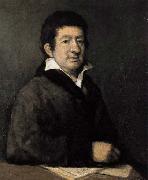Wholesale Oil Painting No Minimum |
|||||||||||
|
|
|||||||||||

|
|||||||||||
|
|
|
||||||||
Francisco de goya y Lucientesb. March 30, 1746, Fuendetodos, Spain--d. April 16, 1828, Goya is considered the 18th Century's foremost painter and etcher of Spanish culture, known for his realistic scenes of battles, bullfights and human corruption. Goya lived during a time of upheaval in Spain that included war with France, the Inquisition, the rule of Napoleon's brother, Joseph, as the King of Spain and, finally, the reign of the Spanish King Ferdinand VII. Experts proclaim these events -- and Goya's deafness as a result of an illness in 1793 -- as central to understanding Goya's work, which frequently depicts human misery in a satiric and sometimes nightmarish fashion. From the 1770s he was a royal court painter for Charles III and Charles IV, and when Bonaparte took the throne in 1809, Goya swore fealty to the new king. When the crown was restored to Spain's Ferdinand VII (1814), Goya, in spite of his earlier allegiance to the French king, was reinstated as royal painter. After 1824 he lived in self-imposed exile in Bordeaux until his death, reportedly because of political differences with Ferdinand. Over his long career he created hundreds of paintings, etchings, and lithographs, among them Maya Clothed and Maya Nude (1798-1800); Caprichos (1799-82); The Second of May 1808 and The Third of May 1808 (1814); Disasters of War (1810-20); and The Black Paintings (1820-23). |
||||||||
|
|
||||||||
Portrait of the Poet
Portrait of the Poet Painting ID:: 62356 |
60 x 49,5 cm Museo de Bellas Artes, Bilbao Leandro Fern?ndez de Morat?n (1760-1828) was a Spanish dramatist and poet. A supporter of Joseph Bonaparte, he lived in exile in France after Bonaparte fell. Moliere, whose works he translated, was his literary model. His plays, satiric and psychologically acute, include El s?de las ninas [the maidens?consent] (1806), for which he was denounced to the Inquisition. He was subsequently compelled to give up playwriting. He was a friend of Goya who painted his portrait twice, this one in Bilbao, and another in 1799 which is now in the Museo de la Real Academia de San Fernando, Madrid. Author: GOYA Y LUCIENTES, Francisco de Title: Portrait of the Poet Morat?n , 1801-1850 , Spanish Form: painting , portrait 60 x 49,5 cm Museo de Bellas Artes, Bilbao Leandro Fern?ndez de Morat?n (1760-1828) was a Spanish dramatist and poet. A supporter of Joseph Bonaparte, he lived in exile in France after Bonaparte fell. Moliere, whose works he translated, was his literary model. His plays, satiric and psychologically acute, include El s?de las ninas [the maidens?consent] (1806), for which he was denounced to the Inquisition. He was subsequently compelled to give up playwriting. He was a friend of Goya who painted his portrait twice, this one in Bilbao, and another in 1799 which is now in the Museo de la Real Academia de San Fernando, Madrid. Author: GOYA Y LUCIENTES, Francisco de Title: Portrait of the Poet Morat?n , 1801-1850 , Spanish Form: painting , portrait |
|||||||
|
CONTACT US |

